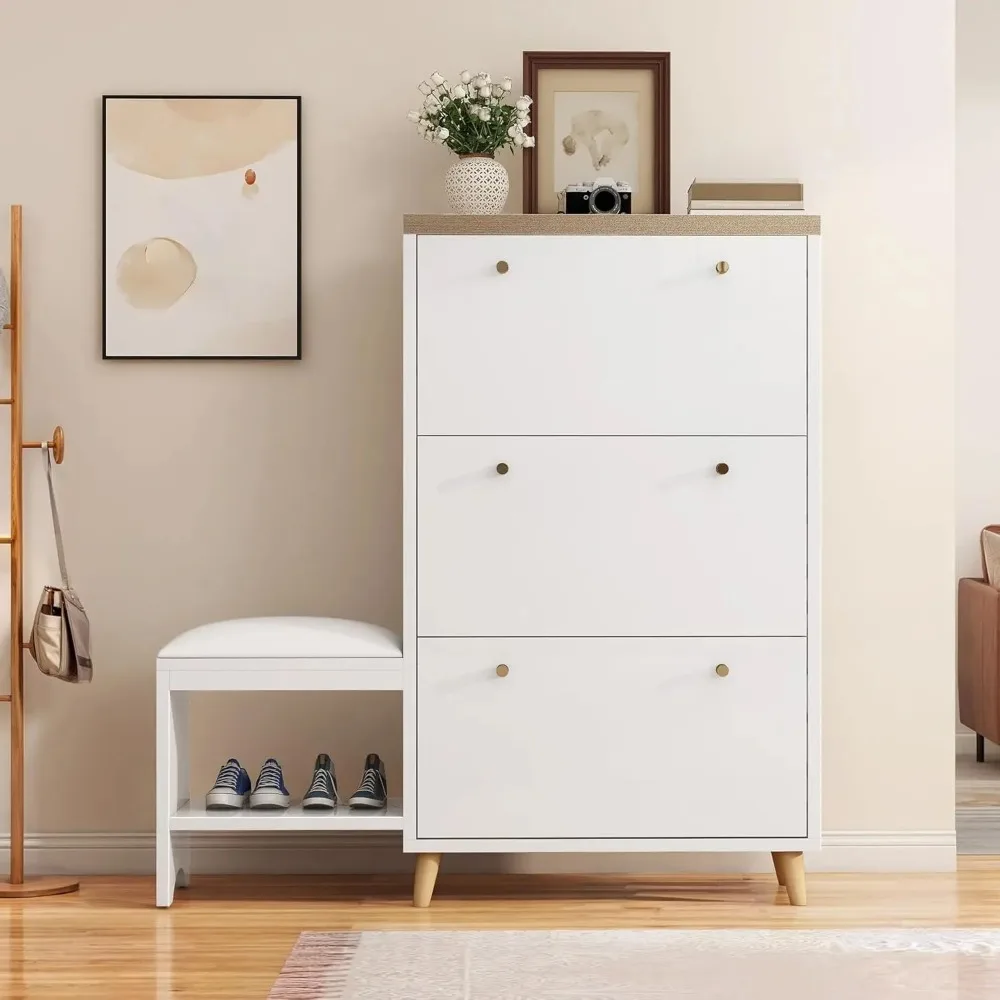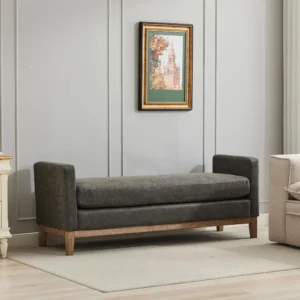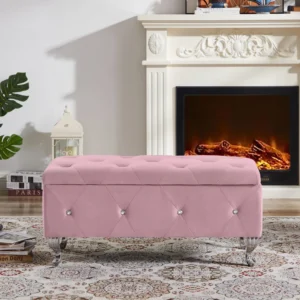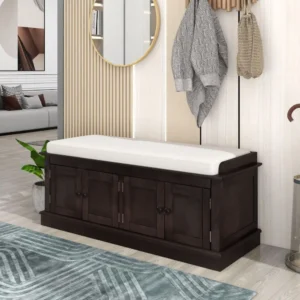Introduction: Corner Bench Furniture as a Smart Solution for Modern Homes
In today’s homes where every square foot counts, multi-use corner bench furniture has emerged as an ingenious solution for maximizing space while adding style. These versatile pieces are designed specifically to fit into corners—areas that often go unused in most rooms—transforming them into functional, attractive features of your home.
As living spaces continue to shrink in urban areas, the demand for furniture that serves multiple purposes has grown significantly. Corner benches address this need perfectly by offering a combination of seating, storage, and style in a single, space-efficient package.
The appeal of corner bench furniture extends beyond just saving space. These pieces offer several key advantages:
- Space optimization: Utilizes often-neglected corner areas
- Increased seating capacity: Accommodates more people than traditional seating in the same footprint
- Built-in storage: Provides hidden compartments for organizing essentials
- Visual appeal: Creates a custom-designed look that enhances room aesthetics
- Versatility: Adapts to different rooms and purposes throughout your home
Throughout this guide, we’ll explore how space-saving benches can transform awkward corners into the most useful areas of your home. From dining nooks to entryway solutions, you’ll discover how corner entryway bench designs and other multi-functional options can revolutionize your living space.
Types of Multi-Use Corner Benches for Different Spaces
Corner bench furniture comes in various designs tailored to different rooms and functions throughout your home. Understanding these options helps you select the perfect piece for your specific needs.
Dining and Kitchen Banquettes
Kitchen corner benches, often called banquettes, create cozy dining nooks that maximize seating while minimizing floor space.
Key features:
– L-shaped designs that follow wall corners
– U-shaped options for three-sided seating arrangements
– Built-in storage under seats for linens, seasonal items, or cookware
– Often paired with pedestal tables to maximize leg room
– Available with or without backrests for different comfort levels
Modular Corner Bench Systems
These versatile units offer the ultimate in flexibility with components that can be rearranged as needed.
Key features:
– Individual sections that can be configured in multiple ways
– Options to expand or reduce seating as needed
– Mix-and-match capabilities to create custom arrangements
– Potential to add or remove storage elements
– Adaptable to changing room layouts and family needs
Corner Storage Benches
Perfect for entryways, bedrooms, and living spaces, entryway bench storage solutions combine seating with organization.
Key features:
– Hidden storage compartments beneath the seat
– Various opening mechanisms (hinged tops, drawers, or cubbies)
– Designs for specific storage needs (shoes, blankets, toys)
– Options with hooks or shelving above for additional organization
– Weather-resistant versions for covered outdoor areas
Window Seat Corner Benches
These charming additions transform window corners into inviting reading nooks or relaxation spots.
Key features:
– Custom-fit designs that maximize window views
– Integrated storage for books, blankets, or seasonal items
– Often includes cushioned seating for comfort
– Can incorporate electrical outlets for charging devices
– Creates a designated relaxation area in busy homes
Outdoor Corner Benches
Designed for weather resistance, these pieces help maximize seating on patios, decks, and in garden nooks.
Key features:
– Weather-resistant materials like teak, polyethylene, or treated woods
– Drainage features to prevent water accumulation
– Storage for outdoor cushions or garden tools
– Often part of modular outdoor furniture systems
– Can include planters or side tables as integrated elements
The right corner bench depends on your space requirements and intended use. Many homeowners implement space-saving entryway ideas using corner benches to create functional transitions between outdoors and indoors.
Space Optimization: Transforming Underutilized Corners
Corners present unique challenges in home design—they’re often awkward, underused spaces that collect dust or become dead zones. Corner benches ingeniously solve this problem by turning these neglected areas into functional focal points.
When you compare traditional furniture arrangements to those incorporating corner benches, the space efficiency becomes immediately apparent. A standard dining setup with individual chairs might seat 4 people in a 6 × 6 foot area. In contrast, a corner bench arrangement can comfortably seat 6 people in the same space—a 50% increase in capacity.
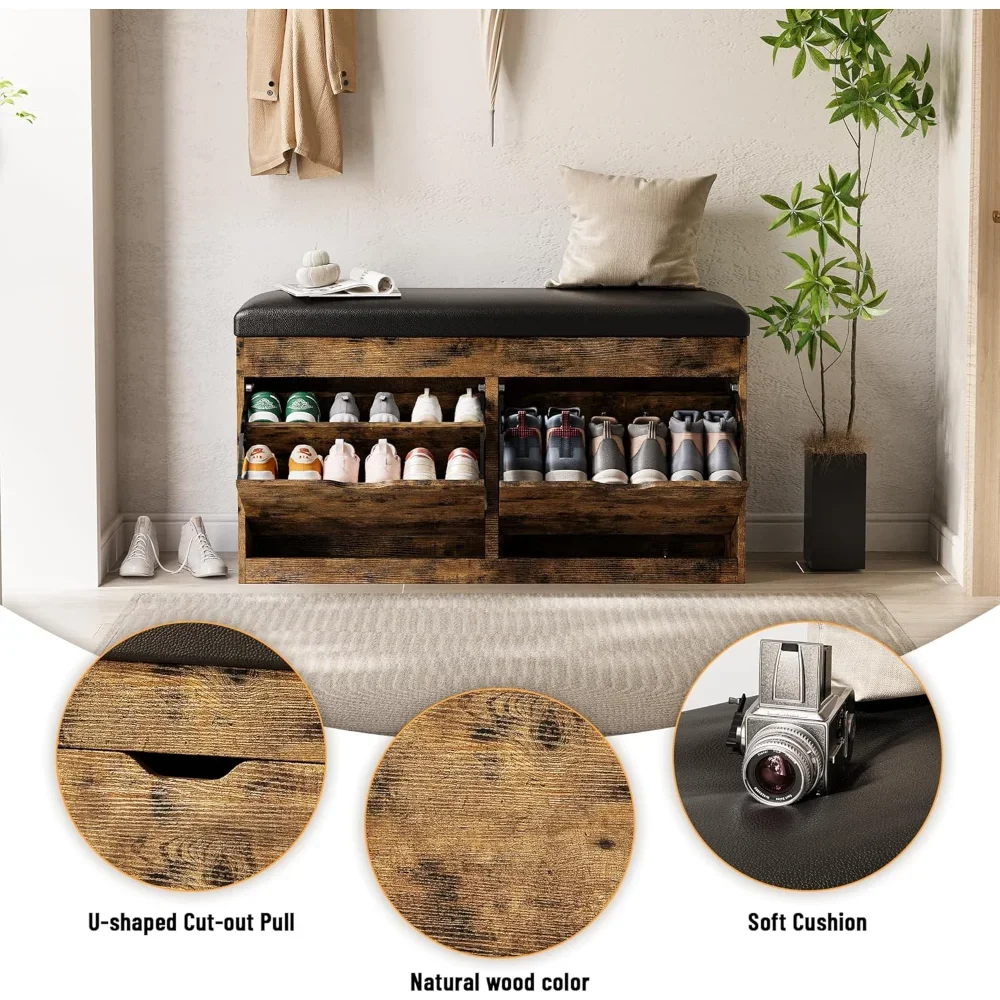
This efficiency comes from several design elements:
– Wall-hugging configurations that eliminate the need for clearance behind seating
– Space-saving angles that follow room architecture
– Elimination of gaps between individual chairs
– Streamlined profiles that visually open up the room
In entryways, corner bench solutions are particularly valuable. A typical entryway corner bench can create a proper landing zone in just 4 square feet of floor space while providing seating, storage, and organization for an entire family. Maximizing corners with stylish space-saving benches transforms these transitional spaces from chaotic catch-alls into organized, functional areas.
The most dramatic space savings often occur in small apartments and condos where space-saving entry benches for small homes make the difference between cluttered congestion and elegant efficiency. A well-designed corner bench can reduce the footprint needed for an entryway organization station by up to 40% compared to traditional hall tree and bench combinations.
Storage Solutions: Keeping Essentials Organized and Hidden
One of the most compelling benefits of multi-use corner benches is their storage capacity. These pieces cleverly conceal storage space within their seating structure, maintaining a clean, uncluttered appearance while providing substantial organization options.
Storage Mechanism Options
The way you access storage in a corner bench significantly impacts its functionality:
- Flip-top access: The entire seat or sections lift up to reveal storage beneath
- Drawer storage: Pull-out drawers provide organized, compartmentalized storage
- Open cubbies: Accessible spaces below or beside the seating area
- Cabinet-style doors: Hinged doors that open to reveal storage compartments
A typical corner bench with storage can provide between 6-12 cubic feet of hidden storage space—equivalent to a small closet in many homes. This makes creative corner bench storage ideas particularly valuable for homes where closet space is limited.
Organization Strategies
Different locations call for different storage approaches:
Entryway corner benches:
– Seasonal items (gloves, scarves, umbrellas)
– Frequently used shoes
– Pet supplies (leashes, waste bags, small toys)
– Children’s outdoor gear
Dining corner benches:
– Table linens and place settings
– Serving pieces used occasionally
– Children’s art supplies for table activities
– Board games for family gatherings
Living room corner benches:
– Extra throw blankets and pillows
– Media items and electronics
– Children’s toys for quick cleanup
– Reading materials and hobby supplies
For maximum organization, entryway bench drawers offer the benefit of separated storage compartments that prevent items from becoming jumbled together. These are especially useful for households with multiple family members who each need designated storage space.
Versatility and Multi-Functionality: One Piece, Many Purposes
The true value of corner bench furniture lies in its remarkable adaptability. Unlike single-purpose furniture, corner benches can transform to serve different functions throughout the day, making them ideal for homes where space must work harder.
Consider how a kitchen corner bench serves multiple roles:
– Morning coffee nook for quiet starts to the day
– Homework station for after-school activities
– Dining area for family meals
– Work-from-home space during business hours
– Entertainment seating during gatherings
This chameleon-like quality makes choosing a compact bench with multiple functions an intelligent investment for any home. The versatility extends beyond just different uses—it includes adaptability to different spaces as your needs change.
Many corner bench designs incorporate features that enhance their multi-functionality:
– Adjustable table heights to transition from dining to work surface
– Movable backrests that convert between banquette and daybed
– Modular components that can be separated or reconfigured
– Extendable sections for additional seating when needed
For families with evolving needs, this adaptability proves invaluable. A corner bench that serves as toy storage and play seating for young children can later transition to homework space for teens and eventually become a reading nook for empty nesters.
The key to maximizing versatility is selecting pieces with timeless designs that can adapt to changing decor styles and functional requirements. This ensures your corner bench remains relevant and useful as your home evolves.
Materials and Durability: Making the Right Selection
The materials used in your corner bench determine not only its appearance but also its longevity, maintenance requirements, and suitability for different uses. Making informed choices ensures your investment will stand up to its intended purpose.
| Material | Durability | Best For | Maintenance | Relative Cost |
|---|---|---|---|---|
| Solid Hardwood (Oak, Maple) | Excellent (20+ years) | High-traffic areas, family use | Moderate – occasional polishing | High |
| Engineered Wood | Good (10-15 years) | Budget-conscious options, lighter use | Low – simple cleaning | Medium |
| Metal Frame with Wood | Very Good (15+ years) | Modern spaces, mixed material look | Low – dusting only | Medium-High |
| Upholstered (Performance Fabric) | Good (7-10 years with proper care) | Comfort-focused seating, formal spaces | High – regular vacuuming, occasional cleaning | Medium-High |
| Leather/Faux Leather | Good-Excellent (varies) | Elegant spaces, easy cleaning needs | Medium – conditioning required | High (real) Medium (faux) |
For frequently used areas like kitchens and entryways, wood entryway bench options offer outstanding durability. Hardwoods like oak and maple resist dents and scratches, making them ideal for high-traffic zones. Their natural beauty also improves with age, developing a rich patina over years of use.
When selecting materials, consider:
– Traffic level: Heavy-use areas demand more durable materials
– Maintenance willingness: Be realistic about the care you’re willing to provide
– Moisture exposure: Areas near doors may experience weather exposure
– Usage type: Dining areas need different durability than occasional seating
– Children and pets: Some materials stand up better to enthusiastic use
For cushioned sections, removable covers offer practical advantages for cleaning and replacement. Stain-resistant treatments provide additional protection in dining areas or homes with young children.
Entryway Bench with Cushion, Mudroom Bench with Cushion, Shoe Bench for Entryway
$1,186.63 Select options This product has multiple variants. The options may be chosen on the product pageCoat Rack Shoe Bench, Corner Entryway Bench, Corner Hall Tree, Shoe Bench for Entryway
$313.58 Select options This product has multiple variants. The options may be chosen on the product pageCorner Entryway Bench, Entryway Bench with Cushion, Modern Entryway Bench, Shoe Bench for Entryway
$476.34 Select options This product has multiple variants. The options may be chosen on the product pageModern Entryway Bench, Wood Entryway Bench, Wood Mudroom Bench
$497.69 Select options This product has multiple variants. The options may be chosen on the product pageEntryway Bench with Cushion, Small Entryway Bench
$466.79 Select options This product has multiple variants. The options may be chosen on the product pageEntryway Bench with Cushion, Mudroom Bench with Cabinets, Shoe Bench for Entryway, Shoe Bench with Cushion
$991.71 Select options This product has multiple variants. The options may be chosen on the product page
Design and Style Integration: Creating a Cohesive Look
A corner bench should enhance your overall interior design while providing functionality. The right style choices help these practical pieces become design highlights rather than awkward additions.
Style Matching Strategies
Different design aesthetics call for different approaches to corner bench selection:
Modern/Contemporary:
– Clean lines and minimal profiles
– Mixed materials like metal and wood
– Neutral upholstery with geometric patterns
– Floating designs that show floor beneath
Farmhouse/Rustic:
– Distressed wood finishes
– Plank-style construction
– Natural fabric cushions in plaids or solids
– Visible joinery and hardware
Traditional:
– Carved wood details
– Rich wood stains
– Classic patterns for upholstery
– Formal profiles with decorative legs
Transitional:
– Balanced proportions
– Subtle details without excessive ornamentation
– Textural fabrics in neutral palettes
– Mix of traditional forms with contemporary finishes
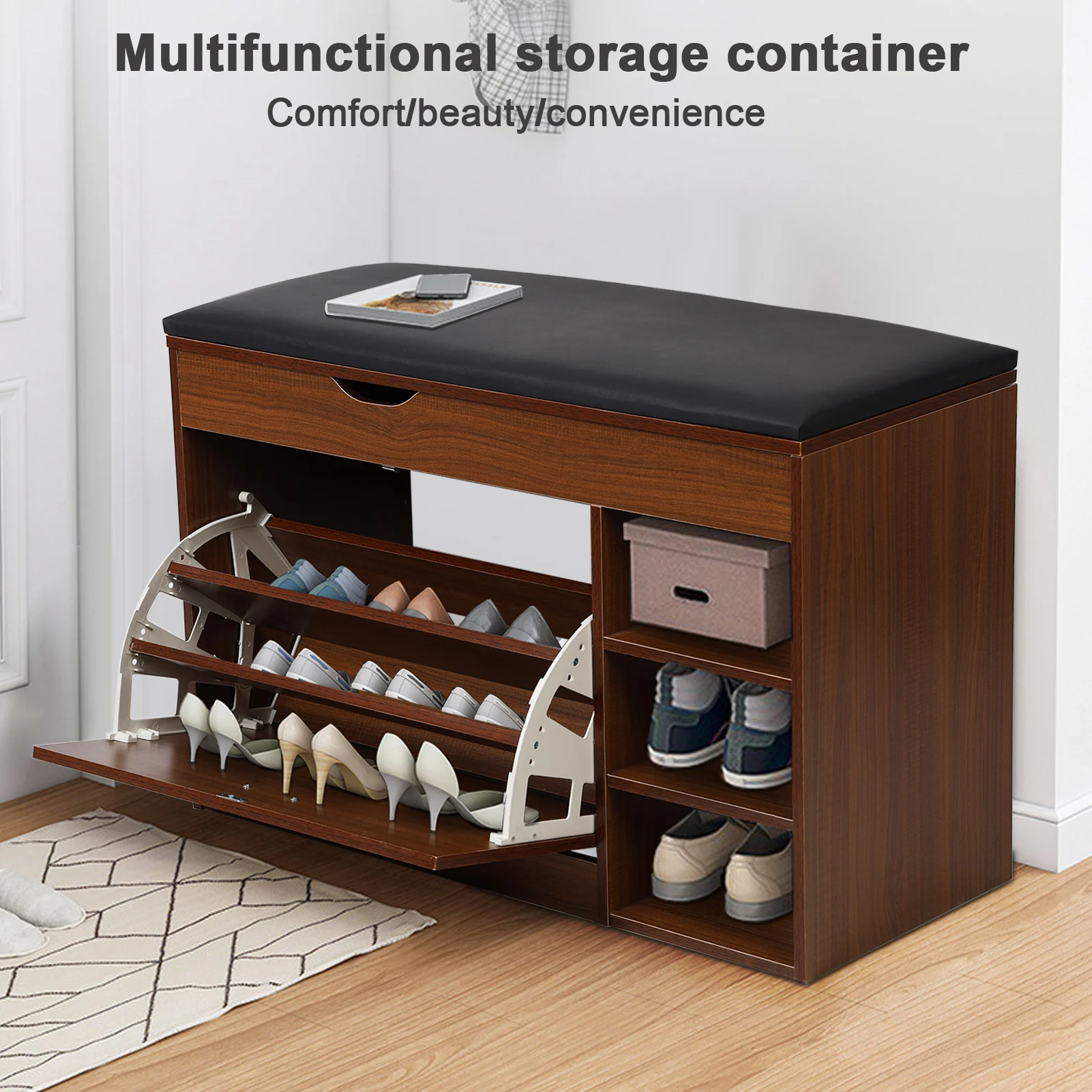
Color Coordination
Color selection significantly impacts how well your corner bench integrates with your space:
- Match wood tones to existing flooring or furniture for cohesion
- Use upholstery as an opportunity to introduce accent colors
- Consider contrast for visual interest (light bench against dark walls)
- Remember that neutral tones offer maximum flexibility as your decor evolves
Accessorizing Your Corner Bench
The right accessories transform a basic corner bench into a styled design element:
- Cushions and pillows add comfort and color
- Throws provide warmth and texture
- Baskets organize items in open storage areas
- Lighting (pendant or sconce) defines the space
For maximum comfort and style, entryway bench cushion options can be selected in fabrics that complement your overall design scheme while providing necessary padding.
Comfort and Ergonomics: Ensuring Long-Term Usability
A beautiful corner bench that’s uncomfortable will quickly become unused furniture. Proper ergonomics ensure your investment remains functional for everyday use.
Essential Dimensions for Comfort
For adult seating, maintain these standard measurements:
– Seat height: 17-19 inches (43-48 cm) from floor to top of seat
– Seat depth: 18-20 inches (45-50 cm) minimum for comfortable seating
– Backrest height: 12-18 inches (30-45 cm) above seat for proper support
– Table clearance: 9-12 inches (23-30 cm) between seat and table bottom
For dining applications, the relationship between bench height and table height is crucial. The standard table height of 30 inches (76 cm) works with the standard bench height, creating comfortable dining posture.
Cushioning Considerations
The right cushioning significantly impacts comfort:
– Foam density of 2-3 pounds provides good support without excessive softness
– Cushion thickness of 2-3 inches (5-7.5 cm) balances comfort with practicality
– Waterproof or stain-resistant coverings protect against spills
– Removable cushions allow for cleaning and replacement
Understanding the perfect entryway bench height and proportions for your specific space ensures comfortable use by all family members. For dining benches, slightly angled backrests (5-7 degrees) provide better support than perfectly vertical backs.
Accommodating Different Users
Consider who will use the bench regularly:
– Higher seats (19-20 inches/48-50 cm) make standing easier for older adults
– Firmer cushions provide better support for longer sitting periods
– Backrest angle impacts comfort for different activities
– Foot support improves comfort for shorter individuals
These ergonomic details make the difference between a corner bench that looks good and one that feels good to use every day.
Strategic Placement and Room Planning
The location and orientation of your corner bench significantly impact both its functionality and the overall flow of your space. Thoughtful placement ensures your corner bench enhances rather than hinders daily activities.
Traffic Flow Considerations
When positioning a corner bench, maintain these clearances:
– Primary walkways: minimum 36 inches (91 cm) clear path
– Secondary pathways: minimum 24 inches (60 cm) clear path
– Rising from seated position: 24-30 inches (60-76 cm) to stand comfortably
In dining areas, leave 48 inches (122 cm) between the table edge and walls or other furniture to allow comfortable movement behind seated diners.
Room-Specific Placement Guidelines
Kitchen/Dining Areas:
– Position benches to capitalize on natural light when possible
– Consider views from the seating area
– Ensure easy access to and from the kitchen for serving
– Allow adequate space for chair placement on non-bench sides of tables
Entryways:
– Place benches where they don’t block door swing paths
– Position storage benches where they’re convenient for removing/storing shoes
– Consider sightlines from the entry door
– Ensure the bench doesn’t create congestion in high-traffic transitions
Living Areas:
– Use corner benches to define conversation areas
– Consider relationship to TV or fireplace focal points
– Position to take advantage of natural light for reading
– Place near but not blocking windows to maintain views
Learning to properly organize a small entryway bench area ensures the space functions efficiently while maintaining an uncluttered appearance. In smaller homes, multi-functional corner benches work best when positioned near transitions between spaces, serving dual zones simultaneously.
Buying vs. Building: Making the Right Decision for Your Space
When adding a corner bench to your home, you’ll face the choice between purchasing a pre-made unit or creating a custom solution. Both approaches have distinct advantages depending on your situation.
Pre-Made Corner Benches
Advantages:
– Immediate availability
– Professional construction quality
– Warranty protection
– Consistent finish and materials
– No tools or skills required
Limitations:
– Standard sizes may not perfectly fit your space
– Limited design and material options
– Potential assembly required
– Higher upfront cost for quality pieces
Pre-made options work best when your space has standard dimensions and when you need an immediate solution. Quality pre-made corner benches typically range from $300-$1,200 depending on materials, size, and features.
Custom-Built Corner Benches
Advantages:
– Perfect fit for unique spaces
– Unlimited design possibilities
– Material selection flexibility
– Opportunity to incorporate specific features
– Potential cost savings for DIY skills
Limitations:
– Requires tools and woodworking skills (or hiring a professional)
– Longer timeframe to completion
– Variable quality depending on builder expertise
– Material sourcing challenges
– Finishing complexities
Custom solutions excel when dealing with non-standard corners or when seeking truly unique designs. Professional custom builds typically cost 20-50% more than comparable pre-made options but offer perfect fit and customization.
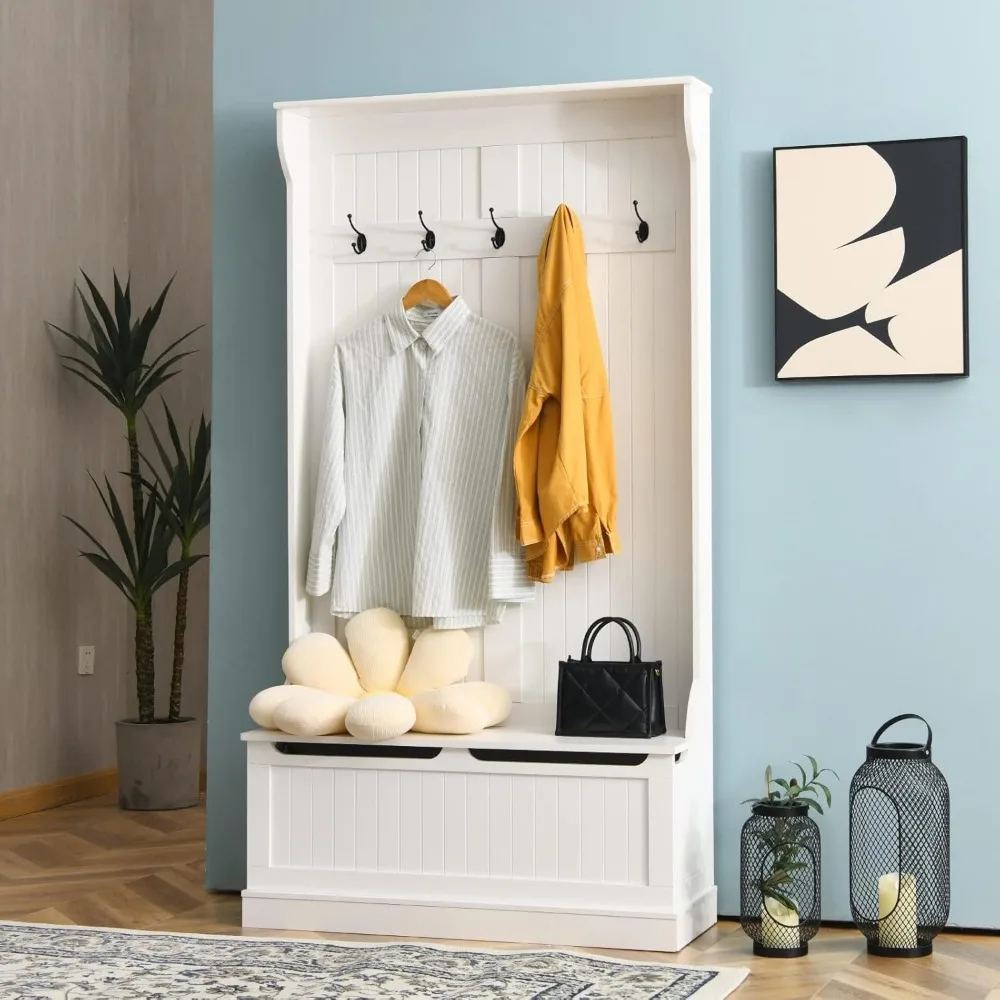
When Evaluating Pre-Made Options
Look for these quality indicators:
– Solid wood construction for frames and structural elements
– Dovetail or box joints for drawers rather than stapled construction
– Smooth-operating hardware (hinges, drawer slides)
– Even, well-applied finishes
– Sturdy construction with minimal flex when weight is applied
– Clear warranty terms and customer support
Whether buying or building, prioritize structural integrity for safety and longevity. A well-made corner bench should last for decades with proper care.
Care and Maintenance: Preserving Your Corner Bench Investment
Proper maintenance ensures your corner bench remains beautiful and functional for years. Different materials require specific care approaches to maintain their appearance and structural integrity.
Wood Maintenance
Regular Care:
– Dust weekly with a soft, slightly damp cloth
– Wipe up spills immediately to prevent staining
– Use furniture polish appropriate for the finish type quarterly
– Maintain consistent indoor humidity levels (40-60%) to prevent warping
Addressing Issues:
– Minor scratches: Use a matching wood touch-up marker
– Water rings: Apply mayonnaise overnight, then wipe clean
– Loose joints: Tighten hardware or apply wood glue as needed
– Sticky drawers: Apply candle wax or paraffin to drawer runners
Upholstery Care
Regular Care:
– Vacuum fabric surfaces weekly using upholstery attachment
– Rotate removable cushions monthly to ensure even wear
– Protect from direct sunlight to prevent fading
– Apply fabric protector annually for stain resistance
Addressing Issues:
– Food spills: Blot (don’t rub) with clean cloth, then use appropriate cleaner
– Persistent odors: Sprinkle baking soda, let sit overnight, then vacuum
– Flattened cushions: Fluff and air out, or replace foam if necessary
– Stains: Use specialized cleaners based on stain type and fabric
Metal Components
Regular Care:
– Wipe clean with damp cloth
– Apply appropriate metal polish for visible parts
– Check and tighten hardware quarterly
– Touch up paint chips promptly to prevent rust
With proper maintenance, quality corner benches can retain their functionality and appearance for 15-20 years or more. Investing a few minutes in regular care prevents costly repairs or premature replacement.
Frequently Asked Questions About Multi-Use Corner Benches
How comfortable are corner benches for extended sitting?
Corner benches can be very comfortable for extended periods when properly designed. Look for models with cushions at least 2-3 inches thick, slightly angled backrests, and proper seat depth (18-20 inches). Adding throw pillows for lumbar support further enhances comfort for longer sitting sessions.
What’s the minimum space needed for a functional corner bench?
A basic corner bench dining arrangement requires at least 4 × 4 feet in the corner itself, plus 3 feet of clearance for movement around the seating area. Smaller entryway corner benches can function in spaces as compact as 3 × 3 feet, making them suitable for apartments and smaller homes.
Do corner benches add value to a home?
Built-in corner benches often add value to homes by creating custom features that enhance functionality and appeal. While freestanding units don’t technically add appraised value, they can significantly increase buyer interest by showcasing smart space utilization when selling your home.
How do I keep cushions from sliding off corner benches?
Use non-slip shelf liner between the bench and cushions, add velcro strips to both surfaces, or select cushions with ties or straps designed to secure them in place. Some bench cushions also come with non-slip backing material already integrated.
What size table works best with a corner bench?
For dining applications, round or pedestal tables work best with corner benches, with diameters of 36-48 inches depending on bench size. This shape eliminates leg interference and allows easier access. The table should be positioned with 7-9 inches between the edge and the bench seat for comfortable dining.
How many people can typically sit on a corner bench?
An L-shaped corner bench with 4 feet of seating on each side typically accommodates 4-5 adults comfortably. Each person requires approximately 24 inches of linear seating space. U-shaped designs with three 4-foot sections can seat 6-8 adults depending on the configuration.
Real Home Transformations: Before and After Corner Bench Solutions
Kitchen Nook Revitalization
A young family struggled with their 8 × 8 foot breakfast area that felt cramped using a traditional table and chairs. By installing an L-shaped corner bench with storage beneath, they gained seating for six while adding 8 cubic feet of hidden storage. The transformation freed up floor space, creating a more open feel while providing dedicated storage for rarely-used serving pieces and seasonal items.
Awkward Living Room Corner Solution
A narrow, awkward corner in a small living room sat empty, collecting dust and wasting valuable space. By adding a 30 × 30 inch corner reading bench with bookshelves above, the homeowners created a cozy reading nook that became everyone’s favorite spot. The bench included drawer storage for magazines and electronic devices, effectively turning 6 square feet of wasted space into a functional feature.
Entryway Organization Upgrade
A cluttered entryway with shoes scattered and nowhere to sit for putting them on transformed with a corner storage bench solution. The bench provided seating for two, six pairs of shoe storage, and hooks above for coats and bags. This simple addition converted a chaotic entry point into an organized transition space that streamlined the family’s coming and going routines.
Bedroom Reading Nook Creation
An underutilized dormer window area in a bedroom became a charming window seat with the addition of a custom corner bench. With storage drawers beneath for extra bedding and off-season clothing, the nook added function while creating a private reading retreat. The homeowners added LED lighting beneath the upper shelving to create a perfect reading atmosphere.
Small Apartment Multi-Functional Setup
In a 500-square-foot studio apartment, space maximization was essential. A modular corner bench system with convertible features served as dining seating by day and transformed into a guest sleeping area at night. The bench included storage for bedding and doubled as the primary storage solution in the apartment, demonstrating how multi-use furniture can make small spaces fully functional.
Maximizing Small Spaces: Corner Bench Strategies for Apartments and Tiny Homes
In compact living environments, every design choice must maximize functionality. Corner benches are particularly valuable in these settings, where their space-efficiency and multi-use capabilities truly shine.
Scale-Appropriate Selection
For very small spaces, proportions become critical:
– Choose benches with slimmer profiles (16-18 inches deep instead of 20+ inches)
– Look for designs with vertical storage that utilize wall space
– Select pieces with lighter visual weight through open bases or legs
– Consider backless designs when appropriate to reduce visual bulk
Residents of compact homes should explore small entryway bench options specifically designed for tight spaces. These scaled-down versions provide the same functionality without overwhelming limited floor area.
Visual Space-Enhancing Techniques
Strategic design choices can make small spaces feel larger:
– Select benches with visible legs rather than solid bases to create visual lightness
– Use light colors or match bench color to wall color to reduce visual interruption
– Incorporate mirrors above or near corner benches to create depth
– Choose multi-purpose lighting that illuminates both the bench area and surrounding space
Dual-Function Requirements
In tiny homes and apartments, single-purpose furniture is a luxury few can afford:
– Select corner benches with convertible features (dining/desk/sleeping)
– Look for designs with multiple storage types (drawers for small items, larger compartments for bulky storage)
– Consider modular pieces that can be reconfigured as needs change
– Prioritize comfort for primary use while ensuring adequacy for secondary functions
By implementing these strategies, even the smallest homes can incorporate highly functional corner bench solutions that enhance both livability and style. The key is selecting pieces with appropriate scale, maximum functionality, and design features that visually expand rather than crowd the space.

